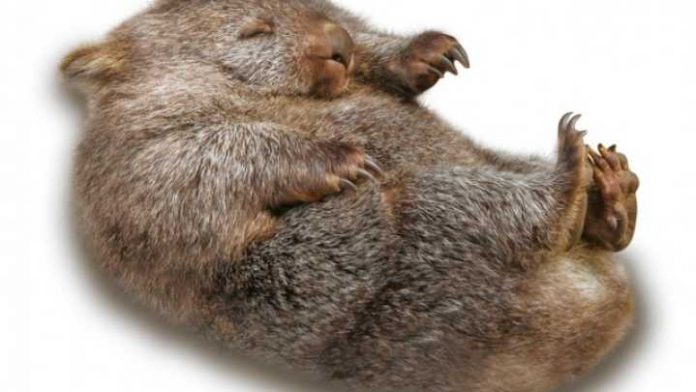You already know that wombats are delightful wonder-loaves who bounce around after their humans and are sometimes very large, but did you know that their poop is cube-shaped? How does that work? Are their butt holes cube-shaped? I am pleased to tell you that scientists have investigated.
According to The Guardian, which referred to the cube poop as “six-faced faeces,” “die-shaped dung” and my personal favorite, “awkward-shaped blocks,” a postdoctoral fellow at Georgia Institute of Technology named Patricia Yang decided to research after her “curiosity got triggered when I realised that cubical feces exist.” Yang and her colleagues conducted the study using the digestive tracts of wombats that had been euthanized after getting hit by cars in Tasmania:
Close inspection revealed that the wombat’s excrement solidified in the last 8% of the intestine, where the faeces built up as blocks the size of long and chunky sugar cubes. By emptying the intestines and inflating them with long modelling balloons, of the sort used to make balloon animals at children’s parties, the researchers measured how the tissue stretched in different places.
The team found that unlike in other creatures, the last section of a wombat’s intestine doesn’t stretch evenly, allowing it “to deform in such a way that packs faeces into 2cm-wide cubes rather than the usual sausage shapes.”
Still, there’s more research to be done:
But the researchers have yet to finish the job. To produce a poo with a square cross-section, the circumference of the intestine would need four stretchy regions interspersed with four stiff regions. That way, the stiff regions form the flat faces, while the stretchier parts allow corners to form. The balloon tests revealed only three stretchy parts and two stiffer ones. In an upcoming paper, the scientists suggest that the other stiff and stretchy bits may only become apparent when they can inflate the intestines to a larger size. In other words, strain a little harder.
Someone had a nice time writing this.








